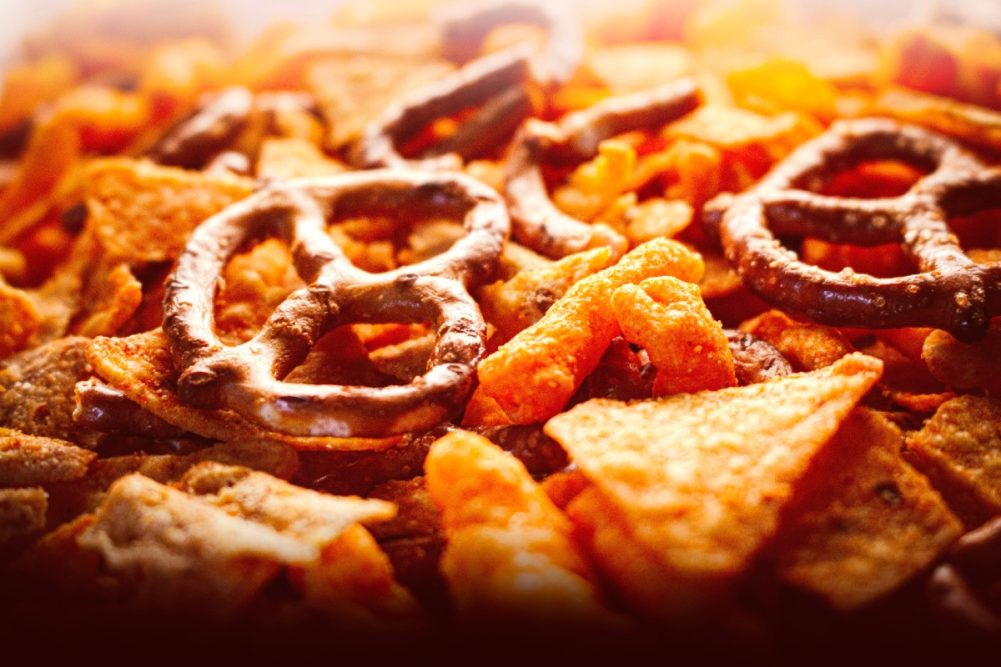COLORADO SPRINGS, COLO. — Snacking definitely remains a lifestyle, with 49% of consumers snacking three times or more a day, and it’s still growing, especially among younger consumers who are fueling this dynamic trend, according to Circana’s 2023 Snacking Survey.
However, Circana forecasts the snack category to experience only modest growth in the lower single-digit range going forward after a surge of sales and unit growth during the pandemic. That said, greater growth could be realized if snack manufacturers step up their game plan and drive sales with creative merchandising, promotion and new product innovation.
Those were some of the many key takeaways from Sally Lyons Wyatt, executive vice president and practice leader for client insights at Circana, during her state-of-the-snack industry presentation at SNAC International’s Executive Leadership Forum.
“We’re going to see some growth, but it’s going to take some work,” she said.
Overall, core snack sales such as potato chips, tortilla chips, popcorn, nuts and cheese snacks rose 8.5%, but unit sales fell 2.1%, according to Circana omnichannel data for the year-to-date ended Sept. 10, 2023. The extended snack category, which includes yogurt and similar items that compete with core snacks, also saw similar performances, as well as the entire mega snack category.
While the strong dollar sales reflect rising prices, the unit sales figure gave Lyons Wyatt some pause for concern. For the first time in years, she said, unit sales in the snack category underperformed the broader food and beverage market. This trend indicates a potential “sales strain” in the snack category as consumers shift their purchasing patterns in response to inflation and higher snack prices.
She added that the 2% decline in units doesn’t disturb Circana researchers too much.
“It’s when we go past the 2% that we start to get nervous in an environment like we are in where you had pretty highly inflated pricing,” she said.
The growth is not across the board in the snack industry. Through mid-year 2023, Circana research indicated, the extra-large snacking companies with $6 billion or more in sales are seeing their share of the pie grow, along with smaller businesses with less than $100 million in sales. Lyons Wyatt said the other large- and mid-sized snack companies are seeing slight declines in their shares of the market.
Snack makers also shouldn’t expect the hefty annual increases in dollar sales they saw during the stay-at-home pandemic period unless companies continue to raise prices to cover higher ingredient and operating costs. She urged snack companies to try to minimize pricing partly because some households are having difficulty keeping up with inflation.
In general, she pointed out, consumers are facing macroeconomic tailwinds and headwinds. The tailwinds include a strong labor market and inflation rates that continue to cool.
However, consumer packaged goods prices have risen 30% since 2019, and wage growth hasn’t kept up. Moreover, households are dealing with the rising cost of credit, higher consumer debt, increasing child poverty, the restarting of student loan repayments and burgeoning housing costs.
Lyons Wyatt pointed to a bifurcation of consumers with lower- and middle-income households having the greatest concerns about inflation and their financial situations. In fact, Circana studies show 60% of lower income households and 52% of middle-income households are “extremely” concerned about food cost inflation compared with 51% of upper income households who say they’re only “somewhat” concerned.
The research firm’s data also indicate an upward trend in some shopping behavior, including 25% of consumers who are now buying what’s on sale more often than their favorite brands, while 72% of consumers look at prices before choosing what snacks to buy.
Households also are purchasing a smaller assortment of snacks and looking for more convenient-sized packages. They’re also trading down to private labels when their budgets are tight.
Lyons Wyatt suggested that inflation has a “compounding effect,” where the strain on a household’s budget builds up over time. That effect, she added, is significantly larger for lower- and middle-income households.
To drive sales going forward, she recommended that snack producers develop a tiered pricing structure that works best for their brands.
She also encouraged greater innovation. With the exception of the extra-large snack players, Circana data indicate that companies are decreasing their investments in new snack innovation. New snacks, Lyons Wyatt said, historically have fostered category growth.
She also urged the forum’s attendees to look at their packaging sizes to make sure they’re meeting consumer demand and possibly explore co-branding and licensing, which she described as “the hottest ticket in town” for driving innovation.
Lyons Wyatt mentioned that snack producers might look at creative merchandising opportunities, such as the Taylor Swift and Beyoncé concert movies, especially when they start streaming.
“That is going to be an event in the home to have friends come over,” she observed. “It’s going to really be this pop culture phenomenon that the likes of us in this room have never seen before. So just when you think about what that means from entertainment into retail, those are huge opportunities.”

